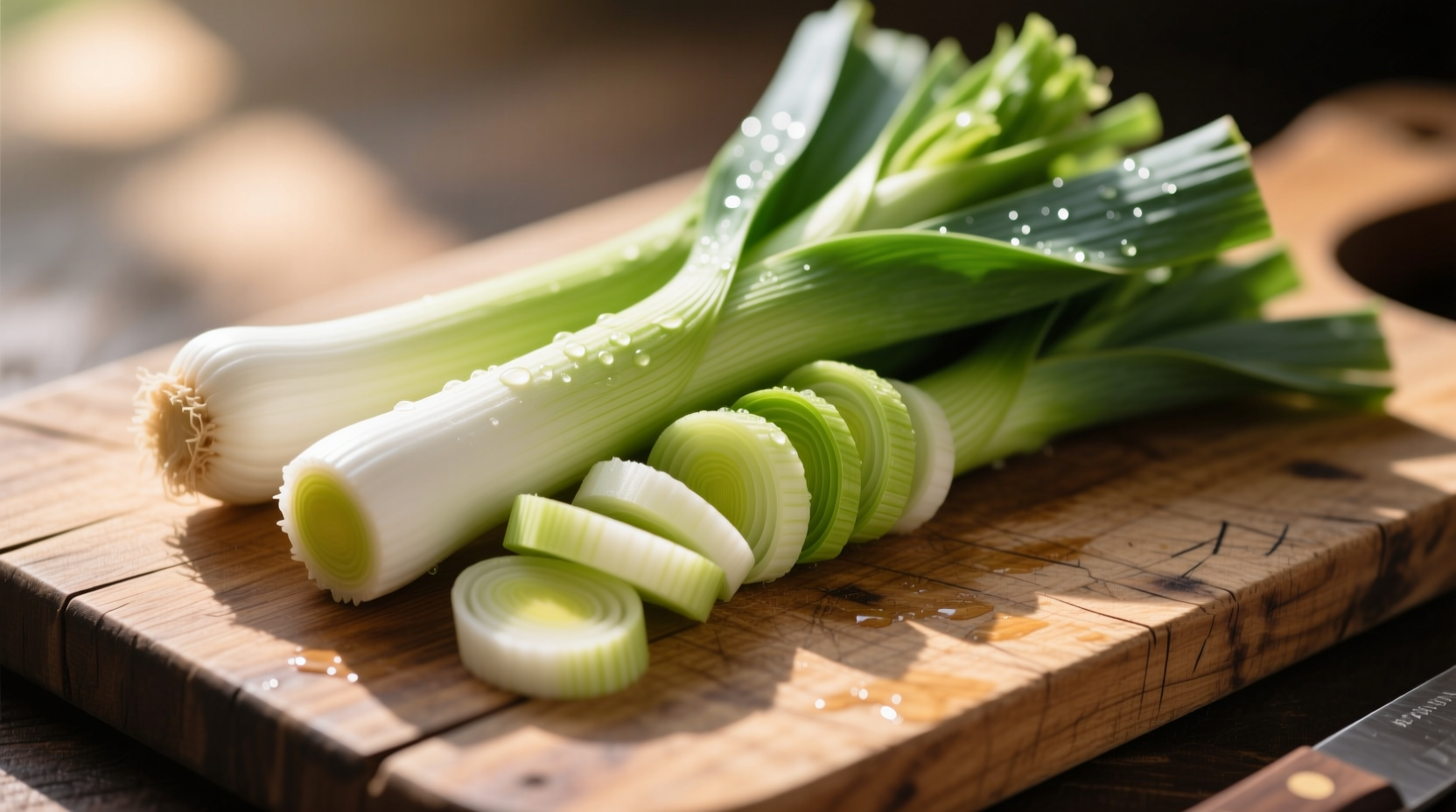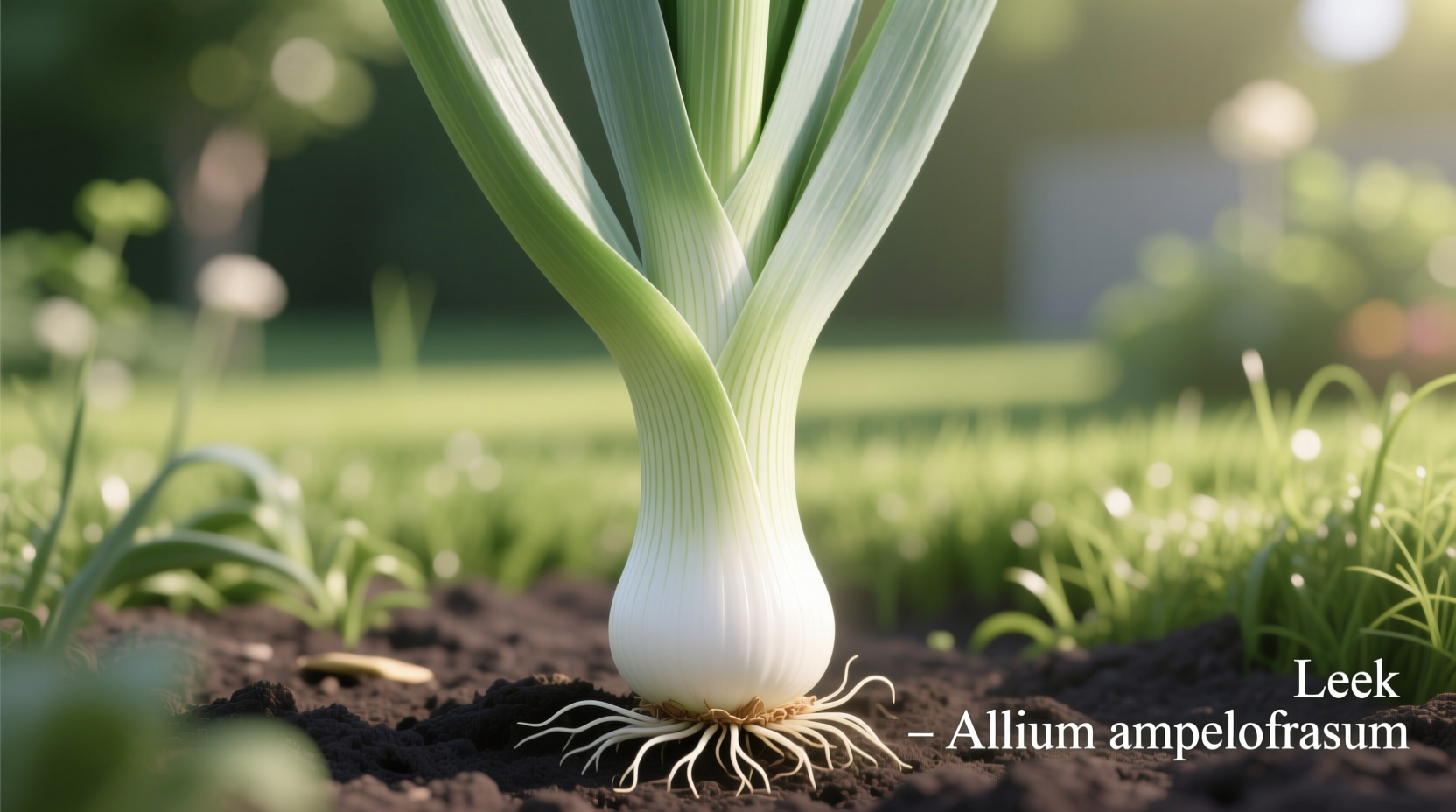Ever stood in the produce section wondering what does a leek look like compared to green onions or scallions? You're not alone. This common kitchen confusion leads many home cooks to pass up this versatile vegetable. Let's solve that problem once and for all with a practical visual guide that helps you confidently identify leeks in any grocery setting.
Visual Breakdown: What Makes a Leek Unique
Understanding what a leek looks like when shopping requires examining its distinctive physical characteristics. Unlike onions that form tight bulbs, leeks develop elongated cylindrical stems with no bulbous end. The base appears as a solid white cylinder, while the green portion consists of flat, broad leaves that grow in overlapping layers.

Leek Identification: Key Visual Markers
When determining what does a leek look like in the grocery store, focus on these critical features:
- Shape: Cylindrical form without a rounded bulb (unlike onions)
- Color gradient: Pure white base transitioning through pale green to dark green tops
- Texture: Smooth, tightly wrapped layers with no separation between layers
- Size: Typically 1-2 inches in diameter at the base and 8-12 inches long
- Leaves: Flat (not hollow like scallions) and broad at the top
| Vegetable | Base Shape | Leaf Structure | Color Transition | Common Confusion Points |
|---|---|---|---|---|
| Leek | Cylindrical, no bulb | Flat, broad leaves | White to pale green to dark green | Often mistaken for large scallion |
| Scallion | Small bulb | Hollow, narrow tubes | White to green (sharp transition) | Smaller size, hollow structure |
| Green Onion | Small bulb | Hollow, thin tubes | White to green (sharp transition) | Identical to scallion, different name |
Context Matters: When Leeks Get Confusing
Identifying what does a leek look like at different growth stages requires understanding context boundaries. Young leeks harvested early resemble large scallions, creating common identification challenges. According to USDA agricultural guidelines, true leeks develop their characteristic cylindrical shape only when allowed to mature fully in cool temperatures for 120-150 days.
When shopping during spring months, you might encounter baby leeks that appear more like oversized scallions. These immature varieties still qualify as leeks but lack the substantial white base of mature specimens. The USDA Agricultural Marketing Service confirms that all varieties sharing the Allium ampeloprasum var. porrum classification qualify as true leeks regardless of size.
Practical Shopping Guide: Selecting Perfect Leeks
Now that you know what a leek looks like when fresh, here's how to choose the best ones:
- Firmness test: Squeeze gently - should feel solid with no soft spots
- Color check: Bright green tops with crisp white bases (avoid yellowing)
- Size consideration: Medium-sized leeks (about 1 inch diameter) offer best flavor balance
- Seasonality: Peak season runs from fall through early spring for optimal sweetness
From Market to Kitchen: Preparing Your Leeks
Understanding what does a leek look like when properly cleaned prevents the gritty texture that deters many first-time users. The layered structure traps soil between layers, requiring specific cleaning techniques:
- Trim off root end and dark green tops (save for stock)
- Cut vertically through the white base
- Submerge in cold water and swish to release trapped dirt
- Rinse individual layers under running water
- Dry thoroughly before slicing
Professional chefs recommend the "fan rinse" method for maximum cleanliness - spreading the layers like a fan under running water to ensure complete soil removal from between the concentric layers.
Storage Secrets: Keeping Leeks Fresh
Proper storage maintains the distinctive appearance that helps you recognize what a leek looks like when fresh versus spoiled. Store uncut leeks in the refrigerator's crisper drawer:
- Wrap in slightly damp paper towel inside perforated plastic bag
- Avoid washing until ready to use
- Use within 7-10 days for best quality
- Discard when leaves become slimy or base softens
According to Cornell University's post-harvest research, leeks maintain optimal texture and appearance when stored at 32°F with 95-100% humidity - conditions most home refrigerators can approximate with proper wrapping.
Common Questions About Leek Identification
Even after learning what does a leek look like, you might still have questions about proper identification and usage. Here are answers to the most frequent concerns:











 浙公网安备
33010002000092号
浙公网安备
33010002000092号 浙B2-20120091-4
浙B2-20120091-4